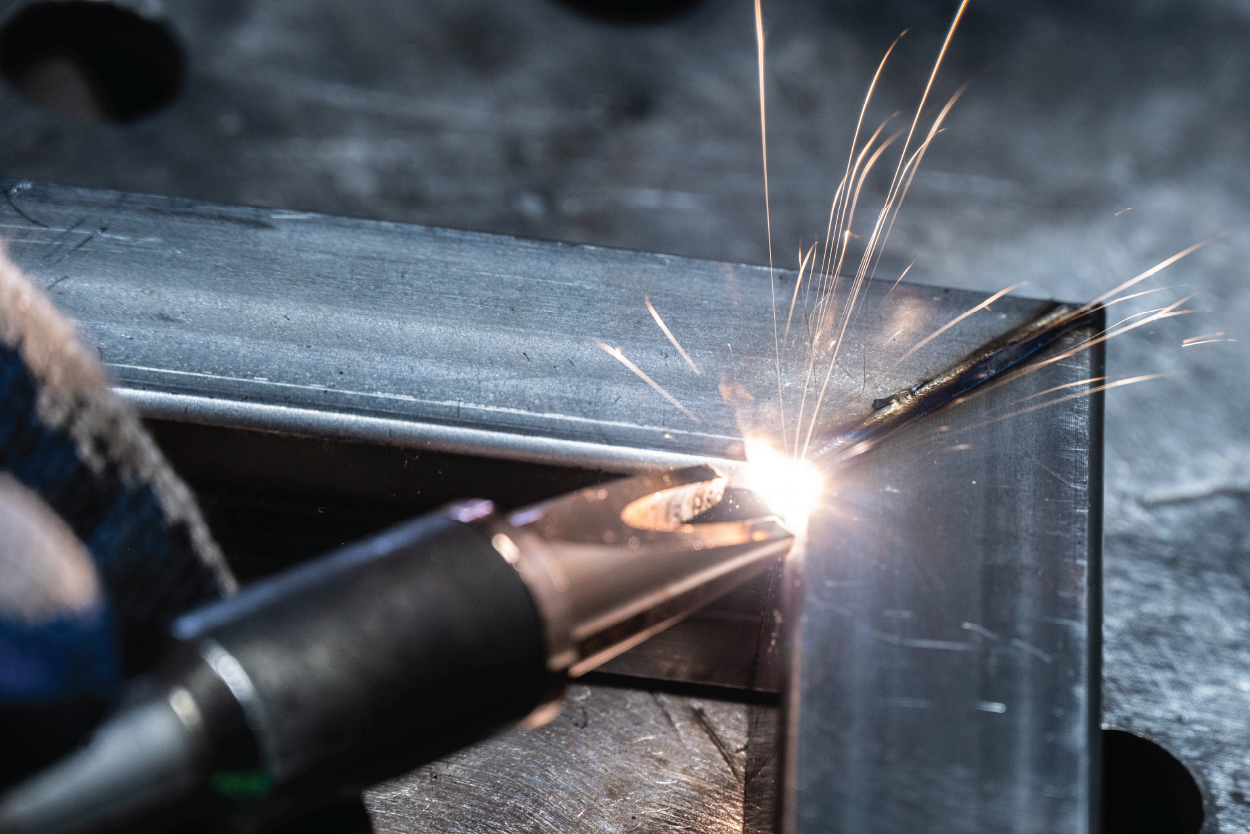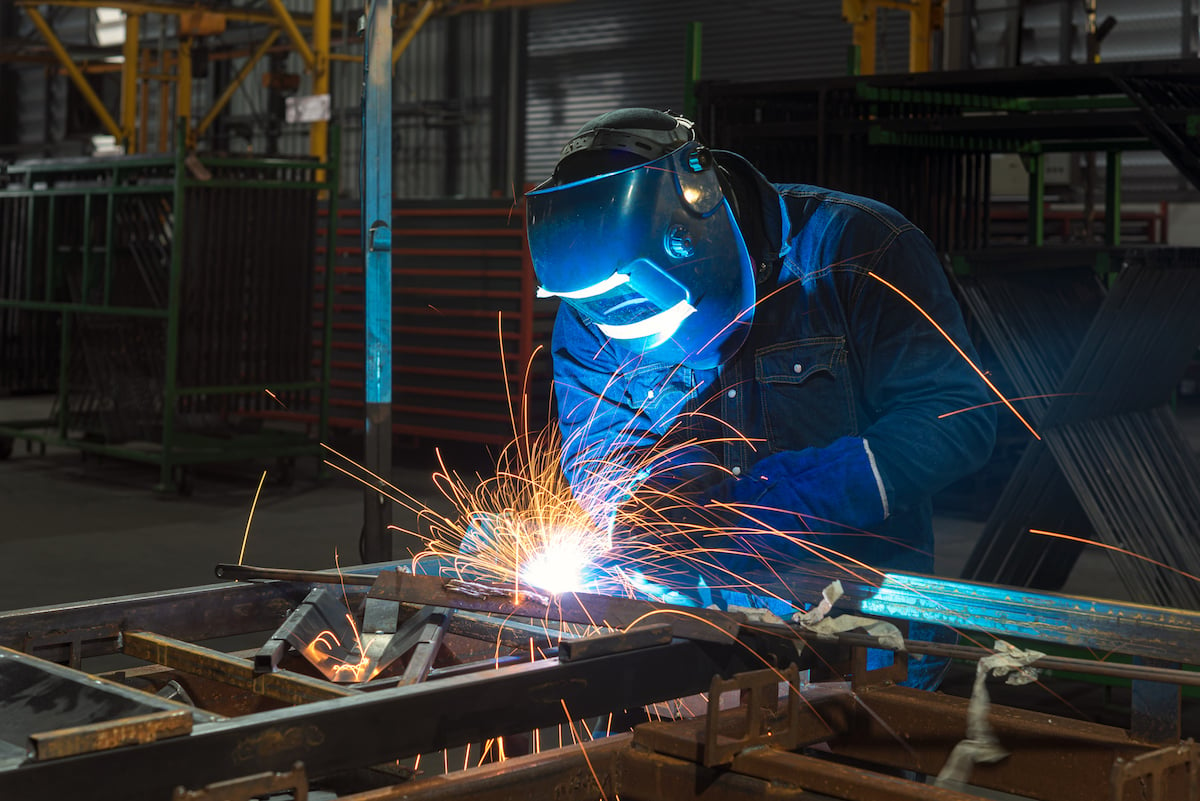All Concerning Welding: Trick Insights Into Techniques and Ideal Practices for Success
Welding encompasses a selection of techniques, each suited for specific products and applications. Understanding these methods, such as GMAW, SMAW, and TIG, is vital for attaining ideal outcomes. Furthermore, the ideal devices and safety and security techniques can not be forgotten. As prep work and repairing play important duties in the welding procedure, grasping these aspects can greatly improve the quality of the end product. What are the essential elements that ensure a successful weld?
Understanding Various Welding Methods
Welding methods encompass a range of techniques, each suited to details applications and products. Amongst one of the most usual strategies are Gas Metal Arc Welding (GMAW), Shielded Steel Arc Welding (SMAW), and Tungsten Inert Gas Welding (TIG) GMAW, also called MIG welding, is prominent for its speed and versatility, making it perfect for thin materials. SMAW, or stick welding, is preferred for its simplicity and effectiveness in outside atmospheres, particularly with thicker steels. TIG welding provides accuracy and control, making it appropriate for intricate job and non-ferrous metals (Belgrade). Each technique has its one-of-a-kind advantages and factors to consider, permitting welders to pick the best approach based upon the project's demands, material kind, and preferred outcomes. Comprehending these techniques is important for successful welding
Vital Welding Tools and Tools
While numerous welding methods require certain abilities, the right devices and devices are similarly necessary for achieving quality results. Crucial welding devices includes welding equipments, which differ relying on the strategy-- such as MIG, TIG, or stick welding. Protective gear, including gloves, safety helmets, and aprons, warranties safety and security and comfort during the process. Furthermore, components and clamps aid secure materials in place, guaranteeing accuracy in welds. Consumables like welding rods, cable, and securing gas are additionally vital elements that influence the high quality of the weld. In addition, devices such as cutters and grinders promote surface area preparation and post-weld completing, contributing to a professional outcome. Investing in premium tools eventually improves the efficiency and effectiveness of welding tasks.
Safety And Security Practices in Welding
Appropriate safety methods are important in the welding industry to secure workers from potential risks. Welders need to use suitable personal safety equipment (PPE), consisting of headgears with appropriate shading, gloves, and flame-resistant apparel. Appropriate ventilation is vital to lower exposure to damaging fumes and gases generated during the welding procedure. Additionally, workers need to be educated in the correct handling of welding tools to stop crashes. Fire safety and security procedures, such as keeping combustible materials far from the welding area and having fire extinguishers conveniently available, are essential. Regular inspections of tools and work areas can aid identify potential dangers prior to they result in mishaps. By adhering to these security techniques, welders can create a more secure working environment and lessen threats related to their trade.
Readying Products for Welding
Preparing products for welding is a crucial action that substantially influences the high quality and integrity of the final item (Montana Mobile Welding and Repair Fabrication). Correct preparation involves cleaning up the surface areas to get rid of contaminants such as oil, rust, and dirt, which can compromise the weld. Techniques such as grinding, sanding, or using solvents are frequently employed to achieve a clean surface area. Furthermore, ensuring that the products mesh well is necessary; gaps can lead to weak welds. It's also essential to take into consideration the placement and positioning of the parts, as this will certainly affect the ease of welding and the final outcome. Finally, selecting the appropriate filler material and making certain compatibility with the base steels is important for achieving solid, sturdy welds
Tips for Achieving High-Quality Welds
Attaining high-quality welds calls for interest to information and adherence to best practices throughout the welding procedure. Proper joint preparation is important, guaranteeing surface areas are tidy and cost-free from impurities. Choosing the ideal filler material and welding technique based upon the base steels is critical for suitable bonding. Maintaining constant travel rate and angle while welding can advertise and prevent defects harmony. Additionally, managing warm input is vital; excessive warm can bring about warping and deteriorated joints. Frequently evaluating the welds throughout the process enables prompt changes if required. Lastly, using appropriate post-weld treatments, such as cleaning and anxiety alleviation, can improve the resilience and stability of the weld, eventually making certain an effective end result.
Fixing Typical Welding Issues
Welding usually presents difficulties that can affect the quality and stability of the last product. Common concerns such as porosity, irregular weld beads, and getting too hot can develop, each needing certain troubleshooting methods. Recognizing these troubles is necessary for welders to improve their skills and achieve perfect results.
Porosity Troubles Discussed
Although porosity can usually be overlooked, it continues to be a crucial concern in welding that can compromise the integrity of an ended up item. Porosity describes the presence of tiny gas pockets within the weld bead, which can damage the joint and lead to early failure. This problem generally emerges from contaminants, dampness, or improper shielding gas coverage throughout the welding process. To mitigate porosity, welders should validate that the base products are clean and completely dry, utilize ideal protecting gases, and maintain constant welding criteria. Consistently evaluating the devices and setting can likewise aid identify prospective concerns before they show up in the weld. Dealing with porosity successfully is essential for accomplishing strong, resilient welds that satisfy top quality standards.

Inconsistent Weld Beads
Inconsistent weld grains can considerably affect the visit high quality and strength of a finished product. Various factors contribute to this issue, consisting of inappropriate traveling rate, inaccurate amperage settings, and inconsistent electrode angles. When the welder moves too quickly, a grain might appear slim and do not have infiltration, while moving also gradually can create too much accumulation. Additionally, making use of the wrong amperage can result in either undercutting or too much spatter, both of which compromise weld integrity. The welder's strategy, such as inconsistent lantern movement, can also bring about unequal grain look. To alleviate these issues, welders ought to concentrate on maintaining best mig welder for beginners stable, controlled activities and making certain proper equipment setups to achieve harmony in their welds. Consistency is essential to accomplishing dependable and solid welds.
Overheating and Warping Issues
Extreme heat during the welding procedure can bring about considerable getting too hot and warping issues, influencing the structural stability of the workpiece. These troubles usually show up as distortion, which can compromise positioning and fit-up, making more setting up challenging. Elements adding to overheating consist of the choice of welding specifications, such as voltage and travel rate, along with the kind of product being welded. To mitigate these issues, welders must keep regular travel speed and proper warm input while keeping track of the workpiece temperature. Additionally, pre-heating or post-weld warm therapy can help minimize stresses caused by rapid cooling - Belgrade. Normal evaluation and adherence to ideal practices are important here in preventing overheating and ensuring the longevity and integrity of bonded structures
Frequently Asked Questions
What Are the Profession Opportunities in the Welding Sector?
The welding industry supplies diverse career possibilities, consisting of settings as welders, instructors, engineers, and inspectors. Specialists can operate in production, building, aerospace, and automobile markets, taking advantage of strong need and competitive salaries in different roles.
Just How Can I Boost My Welding Speed Without Giving Up High Quality?
To boost welding speed without sacrificing top quality, one need to exercise efficient strategies, preserve tools, enhance settings, and boost hand-eye sychronisation. Normal training and seeking responses can likewise greatly add to attaining quicker, high-quality welds.
What Certifications Are Offered for Welders?
Various certifications exist for welders, consisting of those from the American Welding Society (AWS), the National Center for Building And Construction Education And Learning and Research (NCCER), and different industry-specific organizations. These qualifications enhance employability and show skill effectiveness.
Exactly How Does Welding Impact the Characteristics of Metals?
Welding affects the buildings of metals by changing their microstructure, which can lead to modifications in strength, firmness, and ductility. Warm input and cooling rates throughout the process considerably affect these material attributes.
Can I Bonded Dissimilar Metals Together?

Comments on “Common weld defects Montana Mobile Welding and Repair Belgrade Welding helps eliminate”